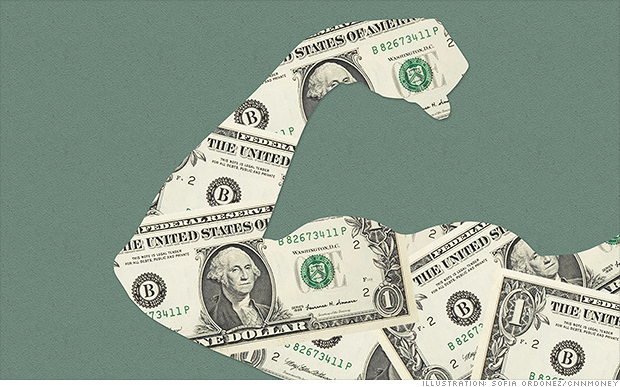
When the dollar was flying high every dog and cat was convinced that the U.S. was embracing a strong-dollar policy. And why not? It sounds great, a civic virtue right up there with honest elections and sober driving. Now that the dollar is on the skids—down 18% against the euro for 2002 and 10% against the yen—everyone questions the level of the Bush Administration’s commitment to a strong buck.
That questioning will be echoed at Treasury Secretary-designate John Snow’s Senate confirmation hearing. We certainly heard enough about it during the tenure of his hapless predecessor, Paul O’Neill, who once promised to book Yankee Stadium and hire a marching band if he ever deviated from the sacrosanct strong-dollar policy.
Let’s get one thing straight: No dollar policy, strong or weak, exists in the U.S. Nor can it. That’s because the U.S. has for years em-braced a floating exchange rate. In other words, the dollar is on autopilot and finds its own level among other currencies. When traders, investors and foreign central banks are net purchasers of U.S. currency and assets denominated in it, the dollar strengthens. When they’re not, the dollar weakens. Although the U.S occasionally intervenes in foreign exchange markets, the effect is only temporary.
When Robert Rubin ruled the Treasury during the Clinton era, he loved to crow about his strong-dollar policy. The media reverently repeated his nonsense. The policy was a chimera. The dollar was strong then for the simple reason that our economy and securities markets were doing far better than anyone else’s. Overseas capital wanted to get in on the action. Rubin was no more steering the dollar than the fly was steering the coach wheel. Unfortunately, he set a standard, however bogus, for O’Neill (and now for Snow) to live up to.
As I argued in my Nov. 11, 2002 column, the dollar is likely to rise over the coming year, despite news-driven fluctuations. Shortly after the column appeared, and as I had warned, war fears about Iraq and Korea pounded the buck.
The pessimists are fixated on the current account deficit, the gap between the value of the goods and services that the U.S. buys and sells abroad. Up to now the U.S. has had little trouble funding this gap, since foreigners have been happy to invest here. And they are probably going to keep performing this service.
Our current account deficit is mirrored by surpluses elsewhere. A full 80% of the total surpluses globally come from countries beset by declining industrial production or deflation, like Japan. To combat their troubles, these countries need to expand their exports and current account surpluses.
The upshot: To maintain their export competitiveness, the last thing these countries need is a weak U.S. dollar. That’s why their central banks are very willing to keep on piling up dollar reserves. The same goes for foreign corporations and wealthy individuals, who always want sizable positions in what is still the world’s premier currency. Their dollar purchases offset at least 40% of the deficit.
Taking care of the other 60% is a bit more problematic. So-called “foreign direct investment”—purchases of real estate, factories and operating companies (like HSBC (nyse: HBC – news – people )’s acquisition of Household)—is, on balance, negative. What bails us out is foreign “portfolio investing” in our stocks and bonds. While U.S. market performance is poor, it’s even worse in many other countries. Moreover, U.S. markets are the largest, most liquid and—accounting scandals or no—most transparent.
What’s worrisome is that these favorable underlying inflows have been temporarily swamped by short-term speculative outflows. Futures and options traders are very long the euro versus the dollar. Should the geopolitical imponderables go wrong for the U.S., the collateral damage could impair the fundamental inflow, thus undermining both the dollar and the economy.
On another subject, looking back over the past year, my one piece of investment advice at least wouldn’t have lost you money. In the fall (Sept. 30, 2002) I suggested investing in Pimco bond funds—half in inflation-adjusted Real Return, the rest split between Total Return and Global Bond Admin. You should continue to hold these long-term winners. In the brief period since I suggested the Pimco funds, you would have gained 2.4% total return. Thanks to the fall stock rally, however, a comparable investment in the S&P 500 would have returned 8.4%. That’s an anomaly at a time when bonds have been beating stocks handily.
Author Steve H. Hanke

0 responses on "The Strong-Dollar Charade"